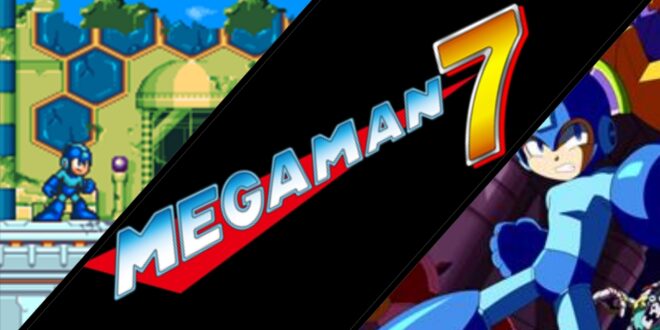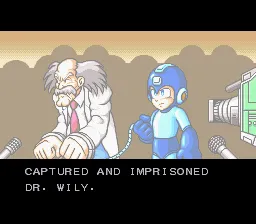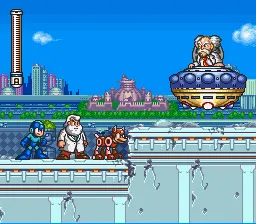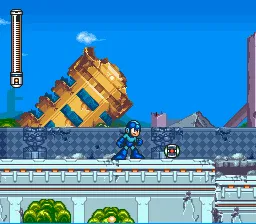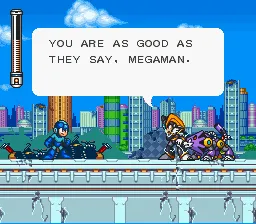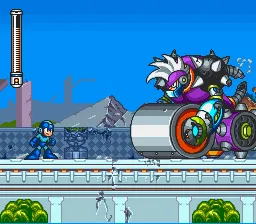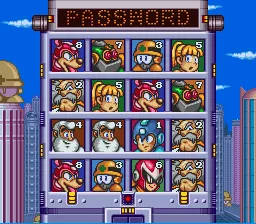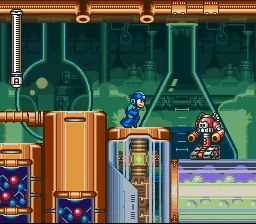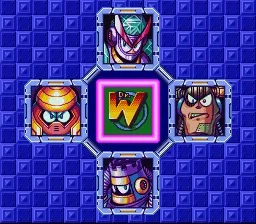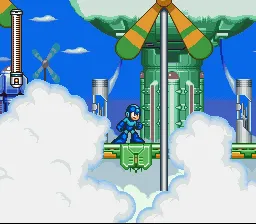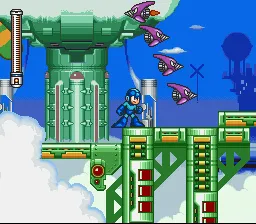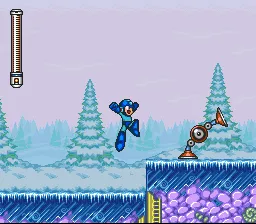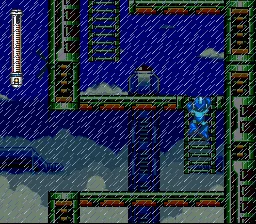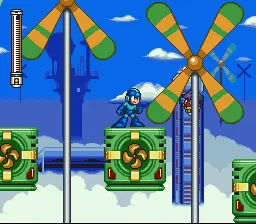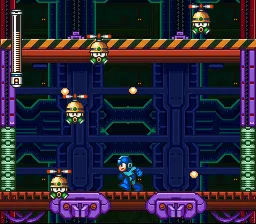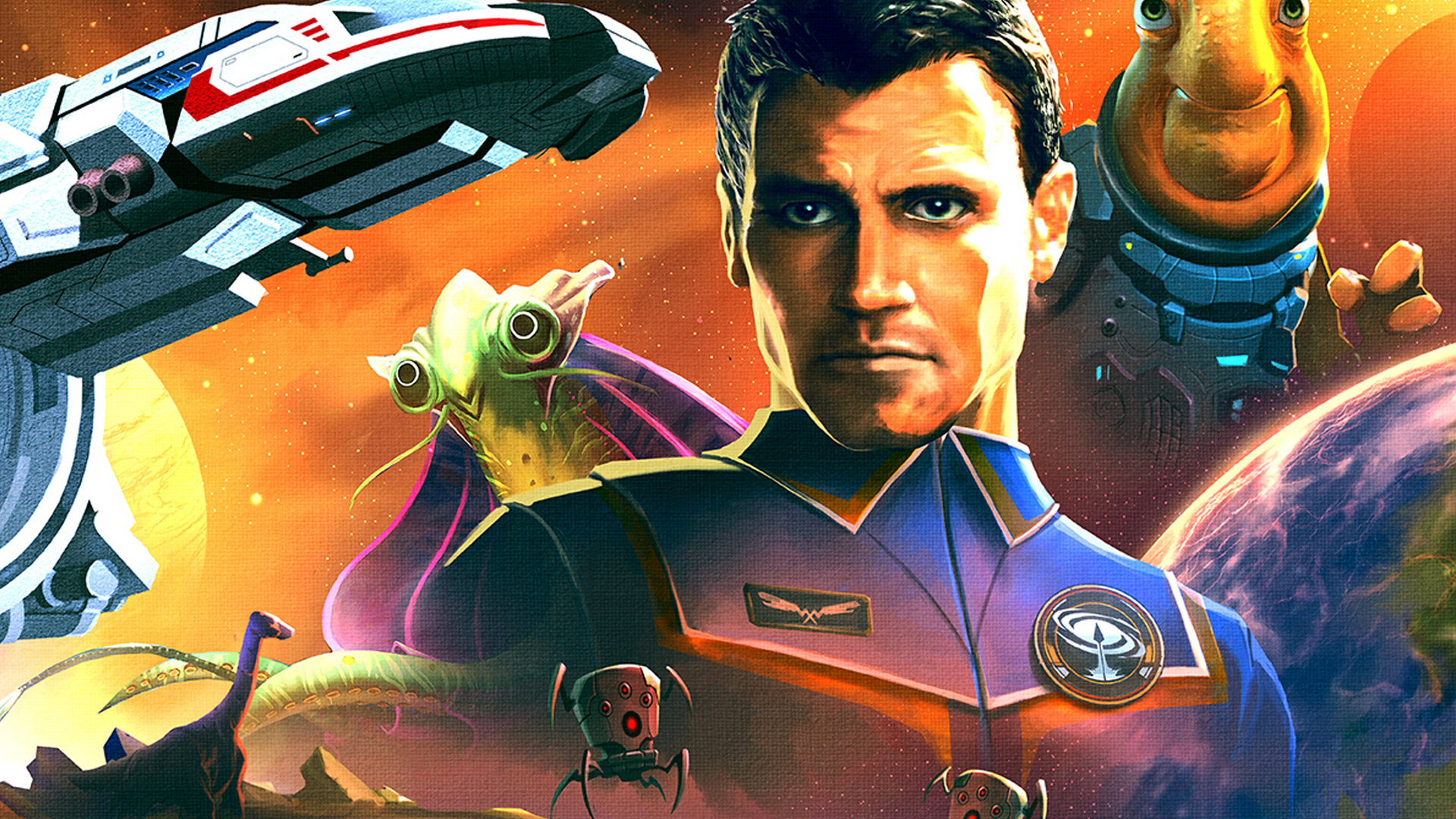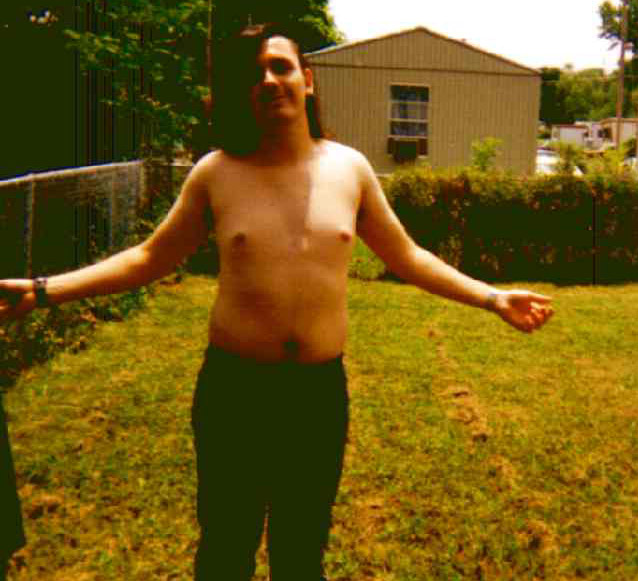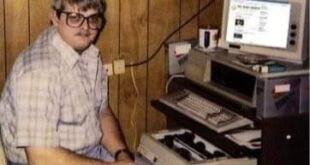(HEY YOU!! We hope you enjoy! We try not to run ads. So basically, this is a very expensive hobby running this site. Please consider joining us for updates, forums, and more. Network w/ us to make some cash or friends while retro gaming, and you can win some free retro games for posting. Okay, carry on 👍)
Retro Review: Mega Man 7 – A 16-Bit Evolution with a Polarizing Debut
In the pantheon of classic gaming franchises, Mega Man stands as a colossus, and its seventh numbered entry, Mega Man 7, released in 1995 for the Super Nintendo Entertainment System (SNES), is a particularly interesting chapter in the Blue Bomber’s storied history.
Developer and Design
Developed by Capcom, the studio that had already captured the hearts of gamers with the previous six Mega Man titles on the NES, Mega Man 7 was crafted with a clear intention to harness the SNES’s 16-bit capabilities. Keiji Inafune, a name synonymous with Mega Man, was involved but in a limited capacity, juggling his responsibilities with the development of Mega Man X, which had launched a year prior.
Visuals and Audio
Upon release, one of the first things that players noticed was the game’s significant graphical upgrade. Character sprites were larger, more detailed, and full of vibrant color, taking full advantage of the SNES’s enhanced palette. The animation was smooth and expressive, breathing new life into Mega Man and his robotic foes.
The backgrounds were equally impressive, with each of the game’s diverse levels boasting its own distinct feel and theme. From the neon signs of Junk Man’s stage to the eerie hues of Shade Man’s level, the game was a visual treat that pushed the SNES hardware in ways that earlier Mega Man games on the NES could not.
Musically, Mega Man 7 continued the franchise’s legacy of catchy, energizing chiptunes, though with the SNES’s advanced sound capabilities, the compositions were richer and more complex. Tracks like the opening stage theme and the music for Cloud Man’s stage have become fan favorites.
Listen to some standout tracks here:
Gameplay Innovations
Gameplay-wise, Mega Man 7 followed the series’ classic formula, with a few new twists. Players were initially given a choice of four Robot Masters instead of the usual eight, with the remaining four becoming accessible after the initial four were defeated. This slight change-up added a novel pacing structure to the game.
Mega Man 7 also introduced the character Auto, who ran an item shop where players could purchase upgrades and special items using bolts collected throughout the stages. This added a new layer of strategy to the game, allowing players to customize their playthrough to some extent.
Another addition was the introduction of a new rival character, Bass, and his canine companion, Treble, who added depth to the game’s narrative and presented Mega Man with a worthy adversary, much like Proto Man in previous games.
Reactions and Reception
Upon its release, Mega Man 7 received a mixed reception. Some praised the game for its updated graphics and sound, as well as its faithfulness to the Mega Man formula. Others, however, criticized it for not innovating as much as the Mega Man X series, which was seen as the future of the franchise. The larger character sprites also received a polarized response, as they changed the feel of the game by making the stages feel smaller and the action more cramped.
Facts and Legacy
- Mega Man 7 was reportedly developed in a very short time frame, rumored to be around three months, which is impressive considering the quality of the final product.
- The game featured a hidden two-player battle mode where players could duke it out as Mega Man and Bass.
- It was the last mainline Mega Man game to be released on a home console until Mega Man 8 on the PlayStation, as subsequent entries went to handheld systems.
Conclusion
Mega Man 7 is often overshadowed by both its classic NES predecessors and the edgier Mega Man X series on the SNES. Nonetheless, it stands as a testament to Capcom’s ability to adapt its franchises to new hardware, even if the resulting game didn’t quite live up to every fan’s expectations. For those who appreciated the classic Mega Man gameplay and didn’t mind the larger sprites, Mega Man 7 offered a robust and visually appealing package that retained much of the charm that had made the series great.
For retro enthusiasts or newcomers curious about Mega Man’s 16-bit foray, the game is available on various collections and digital platforms, ensuring that this piece of Mega Man history remains accessible.
In the end, Mega Man 7 may not be remembered as the best in the series, but it certainly deserves recognition for its achievements and for providing a solid, enjoyable experience during atime of significant transition for the Mega Man franchise.
The verdict!
Graphics - 88%
Sound - 100%
Gameplay - 88%
Replay value - 84%
90%
While not the best Mega Man in the series, it IS in the series.
 Retro Replay Retro Replay gaming reviews, news, emulation, geek stuff and more!
Retro Replay Retro Replay gaming reviews, news, emulation, geek stuff and more!
